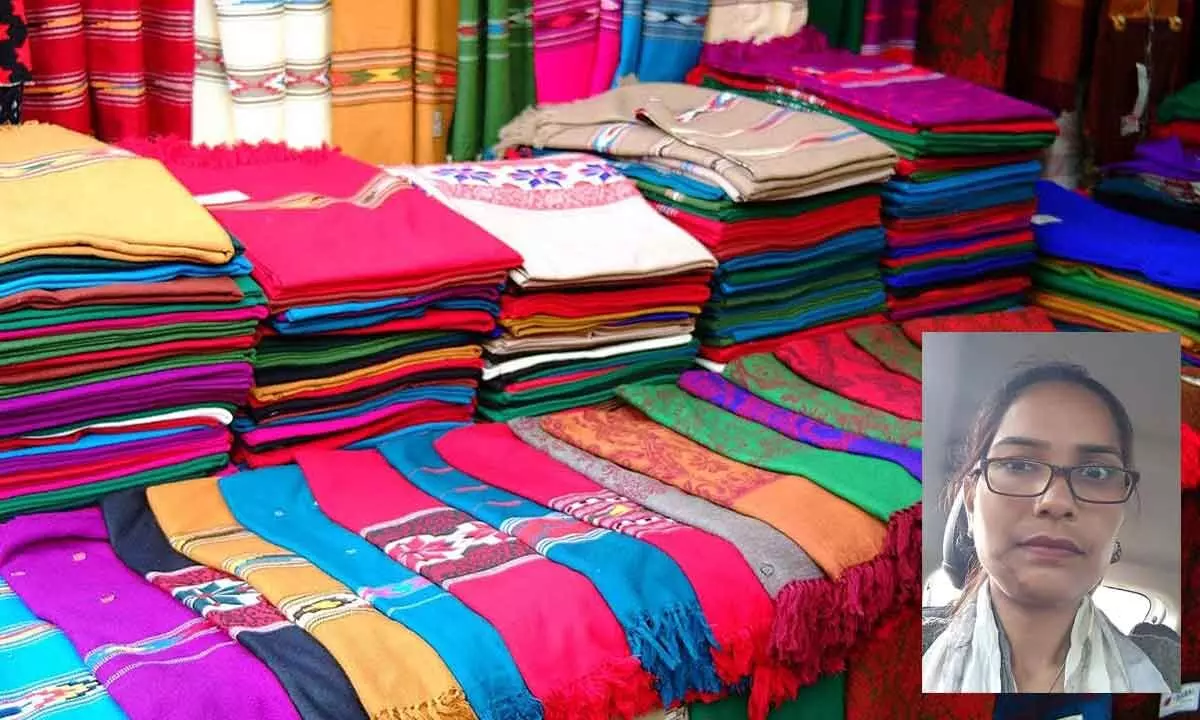Innovation, adaptability key to success for textile players
Indian textile industry has undergone a remarkable transformation, shifting from traditional tailoring to branded readymade garments and then being revolutionised by e-commerce
image for illustrative purpose

The future holds promise for technical textiles, eco-friendly materials, and quality certifications. To thrive in this ever-evolving landscape, businesses must embrace change, prioritize research and development, and adopt a forward-thinking approach
Over the years the Indian textile and clothing industry has evolved enough and still it is continuously evolving. When we were kids we used to go to the fabric shops and then to tailors and have tailored clothing. After that, a disruption took place of branded readymade clothing and it changed the way we used to select and buy our clothing.
The idea was time and cost-saving, ensuring more comforts, better quality and a good feel. These are the points at the core of every disruption. Many disruptions have changed the industry, the working, and overall system.
Almost one and half decades ago, the most remarkable disruption was of e-commerce which changed things for always. It has 360-degree change that way customers used to explore and buy the same branded and even non-branded clothing. At the same time it ‘forced’ to change to the companies that were not initially keen to opt for this internet-based disruption. Again this took place and succeeded as it saved a lot of time for consumers, made things easy and offered endless options on fingers with more information about the product.
From time to time, small disruptions have also taken place with beat competitively small disruption of activewear, a continuous disruption is sustainable clothing as many brands are offering organic clothing, supporting nature. Buying sustainable clothing gives a sense of responsibility that we have done something to support the environment.
The most relevant or the biggest disruption was startups and that too in most of the product categories. Few of the startups that have penetrated online lingerie selling have done remarkable jobs and enjoyed super growth over the years, rather than burning cash like startups in other industries.
Similarly, funky designs in mens innerwear giving comfort with innovative materials and that too in affordable prices is also a disruption by the startups. This product category has many brands in each income be it low-cost segment to high-value luxury.
There is hardly any product category missing by the disruption, even the ethnic wear. Now top celebrities are endorsing the branded ethnic wear and these brands are ensuring customised experiences for our marriages, parties and festivals.
Nearly in all the product categories, D2C brands proved the biggest disruptors and they made good money while many of them were not having any major development in terms of innovation in their products, they just identified the market gap and worked smartly to fill that gap. It is not just technology or the support from other industries like cheap data plans that put the internet in everybody's pocket. The most recent disruption can be said in the value retailing especially the Zudio brand by Tata and later same strategy is being also followed by other competitors.
What can be the next disruption, nobody can predict it but we can always think, and work on it. It can be technical textile-based products that can have a direct impact on consumer life. It can be a highly sustainable or natural clothing product made with bamboo, hemp or such innovative material, or focusing on the quality aspect, it can be certified quality as so far there are no official quality standards that are legally applicable in Indian textile and clothing industry.
Whatever the descriptions may be there, the idea is to keep preparing yourself, early identification of such opportunities and be ready for such opportunities.
Indian leaders in the textile and clothing industry Reliance and Aditya Birla have invested a lot by taking over such startups or destructors and enjoying good growth in nearly all the segments.
We are not the big giant and many of us can’t be the disruptors as we are very much involved in our existing business. So how can we become part of such disruptions?
We need to see, a deep dive into how much we are focusing on research and development, and innovation in our existing operations. How genuinely we are exploring new things, how is your understanding and adaptability towards futuristic approach, how much brainstorming we do with our team on the new things on the new development on the opportunities areas. Or we are totally, badly occupied in our existing day to day business activities and are not having forward-looking approach.
To remain ahead and get an early mover advantage, it is a must for us to become a part of upcoming disruption and we have to find the same with our existing focus. We have to be smart enough to take advantage of any such disruption.
(The writer runs a garment manufacturing unit in the interiors and mostly employs women workers)

